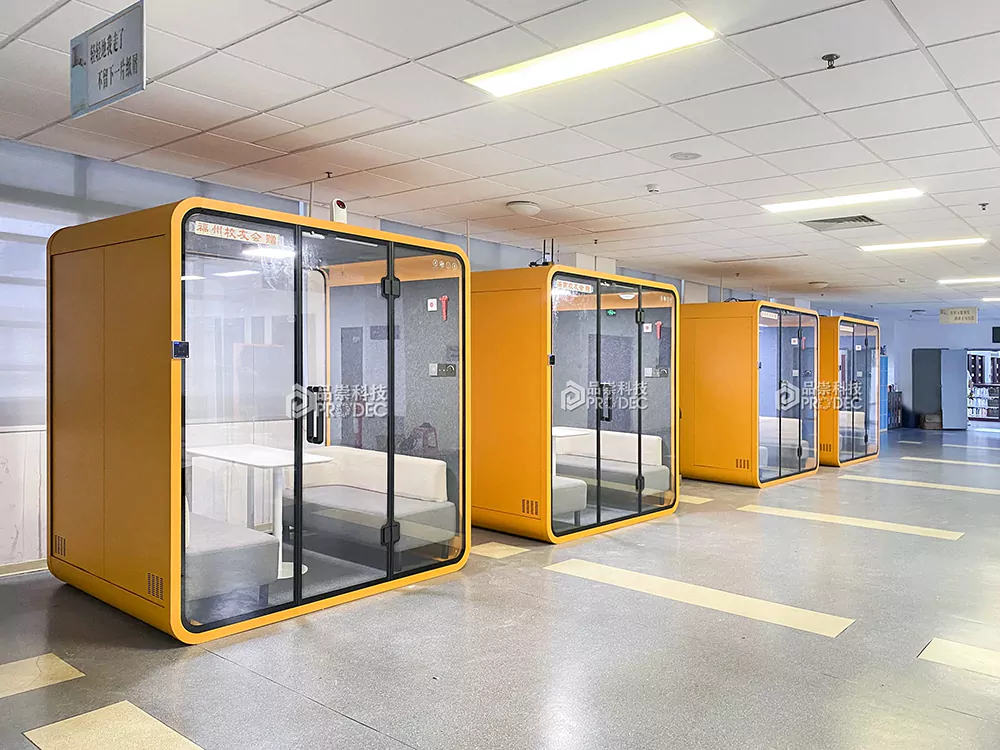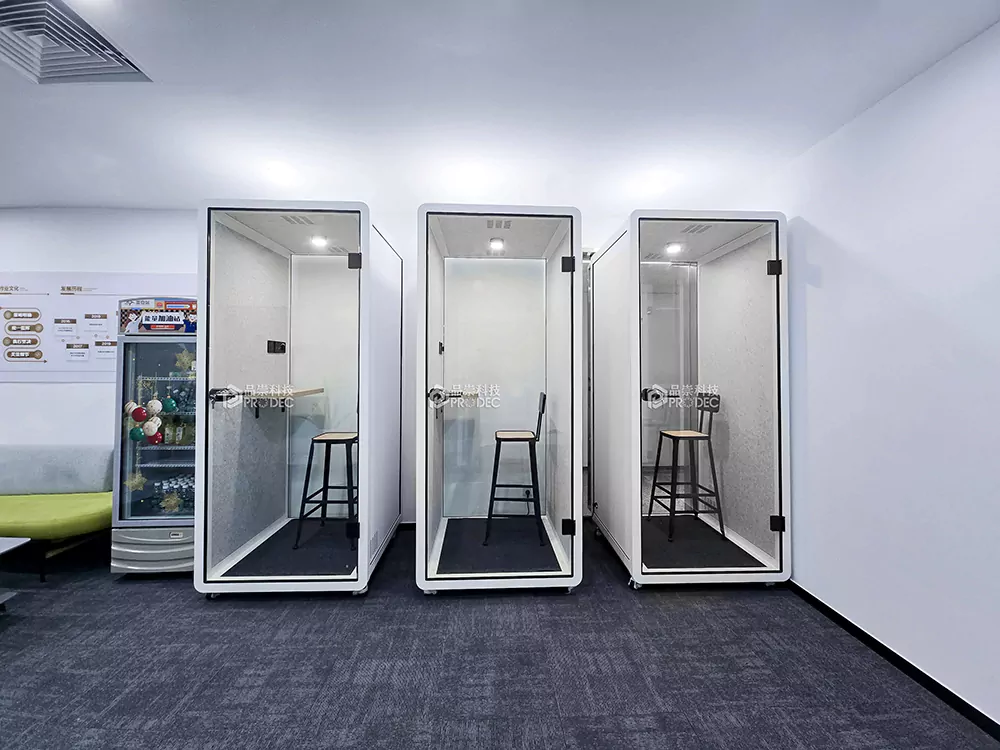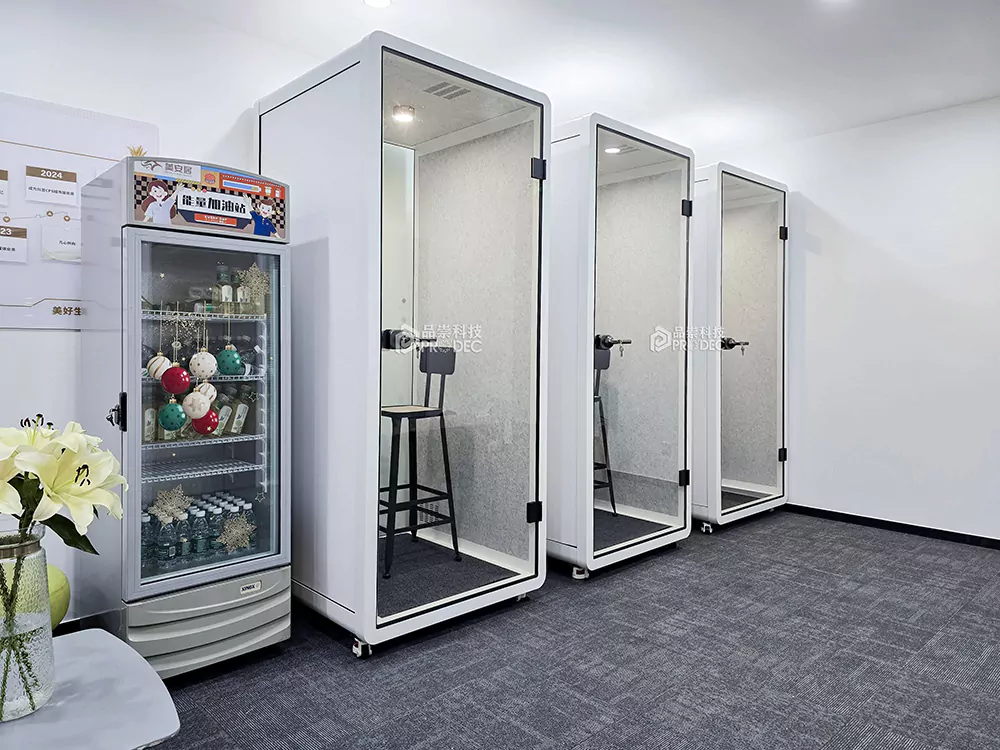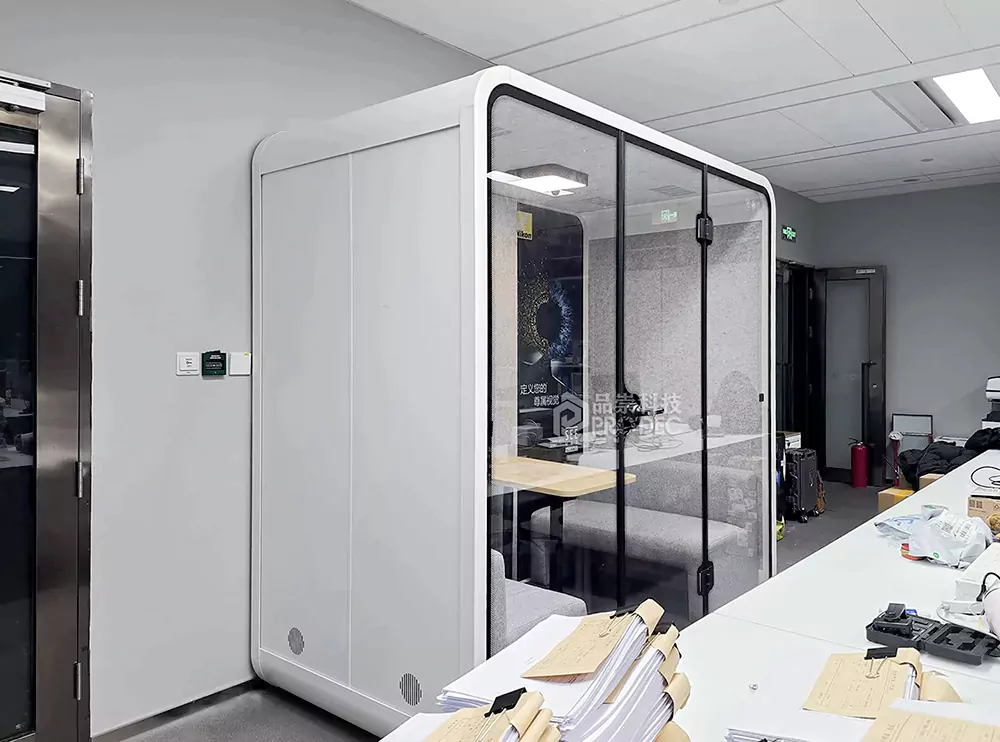Comment réaliser des enregistrements de qualité studio avec une cabine de silence ?
Why Drum Isolation Matters in Modern Music Production
In today’s music production landscape, capturing clean, powerful drum sounds is more critical than ever. Whether you’re recording for pop, rock, or electronic genres, the foundation of your track often starts with the drums. But here’s the problem: most home studios aren’t built for acoustic control. That’s where a silence booth drums setup comes into play. A silence booth—also known as an isolation booth—is designed to contain sound and prevent bleed into other microphones, ensuring that each drum hit is captured with clarity and precision.
Drum bleed can be a nightmare during mixing. Imagine trying to EQ your snare while the hi-hat and cymbals are bleeding into the same mic. It muddies your mix and limits your creative control. By using a silence booth, you create an acoustically controlled environment that minimizes reflections and external noise. This not only improves the quality of your recordings but also makes post-processing much easier. Think of it as giving your audio engineer a blank canvas instead of a cluttered sketch.
What Exactly Is a Silence Booth for Drums?
A silence booth for drums isn’t just a fancy name for a closet full of clothes. It’s a purpose-built enclosure designed to absorb and block sound. These booths are typically constructed with dense materials like mass-loaded vinyl, acoustic foam, and insulated panels. The goal? To create a near-anechoic environment where sound doesn’t bounce around uncontrollably. Unlike traditional vocal booths, drum isolation booths need to be larger and more robust due to the physical size and volume of a full drum kit.
Some professional studios use permanent drywall-and-insulation booths, while others opt for modular, portable solutions. These portable silence booths are perfect for project studios or bedroom producers who want flexibility without sacrificing quality. They often come with adjustable panels and ventilation systems so you don’t feel like you’re recording inside a closet (even if you technically are). When properly designed, a silence booth drastically reduces low-frequency resonance and high-end flutter, resulting in tighter, punchier drum tracks.
Key Features of an Effective Drum Silence Booth
Not all silence booths are created equal. To get the most out of your investment, look for these essential features: First, sound absorption. High-density foam or mineral wool panels should line the interior walls to dampen reflections. Second, mass and density—the outer shell needs to be heavy enough to block sound transmission. Materials like MDF or composite wood with damping compounds work best.
Third, consider ventilation and visibility. Drummers generate heat and need fresh air, especially during long sessions. A good booth includes quiet fans or passive vents. Also, transparent panels (like acrylic glass) help maintain visual contact with the control room or other musicians. Lastly, modularity matters. If space is limited, being able to disassemble and store the booth is a huge plus. Some advanced models even offer magnetic panel alignment for quick setup.
DIY vs. Commercial Silence Booths: Pros and Cons
You might be tempted to build your own silence booth—and honestly, it’s totally doable. A DIY approach lets you customize dimensions and materials based on your specific room and budget. Common hacks include building a wooden frame covered with moving blankets, egg cartons (not ideal), or repurposed studio vocal booths. However, homemade solutions often fall short in blocking low frequencies, which are crucial for drum isolation.
On the flip side, commercial silence booths like those from GIK Acoustics, Auralex, or even portable options from brands like sE Electronics (e.g., Reflexion Filter PRO) offer engineered performance. They’ve been tested for frequency response and sound attenuation. While they cost more upfront, the results are far more consistent. For serious producers, the ROI in time saved and better takes makes them worth every penny. That said, if you’re on a tight budget, combining DIY construction with professionally rated insulation materials can strike a smart balance.
Top Tips for Setting Up Your Silence Booth
Even the best silence booth won’t perform well if set up incorrectly. Start by placing it on a solid, level surface—ideally not directly against shared walls to avoid structural vibration transfer. Use isolation pads or risers under the drum throne and kick drum to decouple the kit from the floor. Inside the booth, position your microphones carefully; proximity effect and phase issues become more pronounced in confined spaces.

Don’t overcrowd the booth with extra gear. Keep cables tidy and limit non-essential items to reduce reflective surfaces. Test the acoustics by clapping inside and listening for echoes. If you hear ringing or flutter, add more absorption panels. Finally, record test tracks and compare them to open-room recordings. You should notice a tighter low end, clearer transients, and less ambient noise—all signs your silence booth is doing its job.
How Silence Booths Improve Drum Sound Design and Mixing
One underrated benefit of using a silence booth is how it empowers sound design. With cleaner source material, you have more freedom to process your drums creatively. Need a gated reverb on your snare? Easier when there’s no unwanted room tone competing. Want to layer samples? Precise timing and tonal control make it seamless. In electronic music production, where drum clarity defines the groove, a silence booth ensures your kicks and snares cut through the mix without fighting ambient smear.
From a mixing perspective, isolated drum tracks mean greater flexibility. You can compress harder, EQ more surgically, and automate with confidence. There’s no need to high-pass excessively to remove rumble because the booth already handled that. Plus, when you do add artificial reverb or delay, it blends naturally since the dry signal is pristine. This level of control is why top producers and engineers swear by isolation techniques—even in world-class studios.
Real-World Applications: Where Silence Booths Shine
Silence booths aren’t just for solo artists. They’re invaluable in multi-instrument tracking scenarios. Picture this: you’re recording live drums while a vocalist records in the same room. Without isolation, the drum mics will pick up vocals and vice versa, making editing a nightmare. A silence booth allows simultaneous recording with minimal bleed, saving hours in post-production.
They’re also perfect for content creators, podcasters, and streamers who want cinematic drum hits in their intros or transitions. Even if you’re using sampled drums, triggering them from an isolated acoustic kit gives a human feel without the mess. And let’s not forget apartment dwellers—urban producers can finally practice and record at night without disturbing neighbors. A well-designed silence booth turns any small space into a functional, professional-grade drum recording zone.
Future Trends in Drum Isolation Technology
As music production becomes increasingly accessible, we’re seeing innovation in drum isolation tech. Active noise cancellation systems, once reserved for headphones, are now being integrated into booth designs. These use opposing sound waves to cancel out specific frequencies in real time. While still niche, they show promise for ultra-quiet environments.
Smart materials are another frontier. Researchers are developing acoustic metamaterials that selectively block certain frequencies while allowing airflow—ideal for drummers who hate feeling boxed in. Additionally, AI-powered acoustic modeling software can simulate different booth configurations before you build one, optimizing performance virtually. As these technologies mature, silence booths will become smarter, lighter, and more effective, making high-end drum recording accessible to even more creators.
本文由人工智能技术生成,基于公开技术资料和厂商官方信息整合撰写,以确保信息的时效性与客观性。我们建议您将所有信息作为决策参考,并最终以各云厂商官方页面的最新公告为准。






